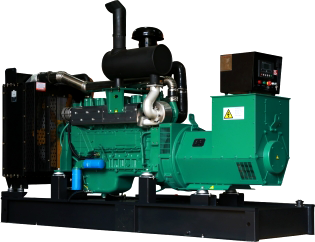Make robots safer: the knowledge behind them (figure)
Like the robot classmates, I must be familiar with Asimov’s three laws of robots:
The robot must not harm humans or sit and watch human beings hurt;
Unless the first rule is violated, the robot must obey the commands of humanity;
The robot must protect itself without violating the first and second rules;
Let's not discuss whether these three laws are complete, and only seriously consider the meaning behind these three sentences. We will find that the most important purpose of the three laws is actually only two words: security.
If the three laws are summarized into one sentence, it should be: to complete the tasks designated by human beings while ensuring the safety of humans and robots.
The development of technology has enabled people to manufacture more and more sophisticated and advanced robots, but new robots, especially civilian robots, have more consideration of their functionality and less safety considerations. This phenomenon is particularly serious in China. How many of the so-called " service robots " in mobile are completed or at least considered for safety certification?
In addition to the lack of awareness of safety certification, people often equate reliability with safety, but are reliable and safe. The life cycle of system security is defined in IEC61508. Security issues are always considered separately from system functions throughout the cycle. To avoid functional reliability, safety assumptions must be made. Security must be proven (Proved)!
In the entire robot industry, except for military and certain special robots , only the safety specifications of industrial robots are relatively sound. Therefore, this series of articles will introduce the safety functions of robots from the perspective of industrial robots (mechanical arms). Replace the industrial robot/mechanical arm with a robot.
Due to the limitation of the level, the shortcomings or errors in the text are welcome.
The main specifications of the robot industry
IECEN61508 "Functional Safety of Electrical/Electronic/Programmable Electronic Safety-related Systems (E/E/PE, or E/E/PES); this standard is industrial safety A common standard in the field can be used both as a basis for writing security standards for subdivisions and as a direct application in areas where there are no specific security standards.
IEC 60204-1 "Safety of machinery - Electrical equipment of machines - Part 1: General requirements", stop category 1/2/3 is the standard;
The EN954-1 safety category Category B, 1, 2, 3, 4 is derived from this standard and was repealed on December 31, 2011;
ENISO 13849-1 "Mechanical Safety - Control System Safety Related Part - Part 1: General Design Rules" (Safetyofmachinery--Safety-relatedpartsofcontrolsystems--Part1: Generalprinciplesfordesign), used to replace EN954-1;
IEC61800-5-2 "Adjustable speed electrical power drive systems - Part 5-2: Safety requirements - Functional", corresponding to the national standard GB/T12668.5.2 "Electrical equipment standards for adjustable speed. Part 5-2: Functional safety Claim". This standard mainly provides functional safety requirements for safety encoders, safety servo drives (STO, SOS, SLS, SBC, SafetyStop1/2, etc.) and servo motors .
ISO10218-1/2 "Robots and robotic devices-Safety requirements for industrial robots" The latest robot safety specifications are divided into two parts: 1 and 2:
ISO 10218-1 specifies the safety principles that robots should follow when designing and manufacturing them;
ISO 10218-2 specifies the principles of personal safety protection in the integrated application, installation, functional testing, programming, operation, maintenance and repair of robots.
ISO-TS15066-2016 "Robot and Robotic Devices - Collaborative Robots", a safety specification written specifically for collaborative robots, and a complement to ISO 10218-1 and ISO 10218-2 for collaborative robotic operations. As commercial and consumer robots continue to grow, standards are slowly improving. Affiliated friends who are interested in this topic can pay attention to the latest personal care robot safety regulations:
ISO13482-2014 "Robots and robotic devices -- Safety requirements for personal care robots".
Diesel gensets are fully used in many important fields such as telecommunications, highways, skyscrapers, hospitals, airports, armies and factories. Our genset includes CUMMINS diesel gensets, PERKINS diesel gensets, LOVOL diesel gensets, DEUTZ diesel gensets and china-made diesel gensets, like WEIFANG diesel gensets, YUCHAI diesel gensets and so on.
Our company has got the independent department of product development and the production base. The processes of products` development, producing and selling and our Diesel Generatorservice are well managed according to ISO9001 Quality Management System, and we provide high-quality products and satisfying service.
Our diesel gensets conform to ISO8528 international standard and GB2820 Chinese standard, and the exhaust gas discharges is up to Europe â…¢.
Soundproof diesel generator sets are usually used in the environments wth stringent requirements for noise such as hospital,school,banks,hotels or other commercial sites.The soundproof generator set is made of the standard unit with mute cover.The mute cover can be removed and facilitate the care and maintenance.


Diesel Generator,Portable Diesel Generator,Silent Diesel Generator,Home Generators
FUZHOU LANDTOP CO., LTD , https://www.landtopco.com